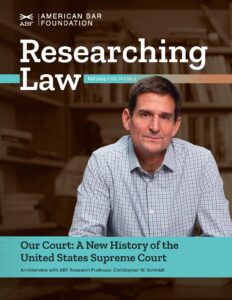This book project examines the evolution of the United States Supreme Court’s relationship with various extrajudicial actors—from presidents to public interest groups to everyday citizens—over the past century. At the heart of this study are the attitudes, expectations, practices, and institutions that connect the Court to American society and American society to the Court. This project asks why, in the period from 1930 to today, the Supreme Court evolved from an institution that was generally understood as standing apart from the American society—as a distant force, exerting its authority over the American people and their governing institutions, often quite controversially, but operating at a Vatican-like remove—to an institution that politicians, reformers, and much of the public treat as an integral component of American political and cultural life. There are two sides to the story I intend to tell. One centers on changing politics and culture—changes in what the various actors outside the Court expect of the justices. The other explores changing judicial norms and behavior—changes in how the justices of the Supreme Court understand and express their relationship to American society.
Home > Research > Making and Implementing Law > Our Court: A New History of the United States Supreme Court



